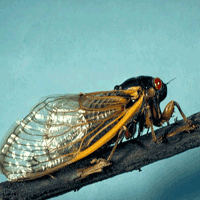
Effects of defoliation by the pine processionary moth Thaumetopoea pityocampa on biomass growth of young stands of Pinus pinaster in northern Portugal
PS Arnaldo (1-2) , S Chacim (1), D Lopes (1-2)
iForest - Biogeosciences and Forestry, Volume 3, Issue 6, Pages 159-162 (2010)
doi: https://doi.org/10.3832/ifor0553-003
Published: Nov 15, 2010 - Copyright © 2010 SISEF
Research Articles
Abstract
Biomass growth models for 13-year-old maritime pine tree stands (Pinus pinaster Ait.) in the north-eastern Portugal were developed and used to analyse the effects of the defoliation by the pine processionary moth, Thaumetopoea pityocampa (Den. & Schiff.) on biomass increment. For the adjustment of the models, 30 individual pine trees were destructively sampled and non-linear models were tested, using the diameter at 10 centimetre height (d0.10), the total height (h), both variables (d0.10+h) and d0.102h as preditors of biomass growth. The results showed that the best predictor was d0.10+h. Application of models to analyse tree biomass after attack by the pine processionary moth showed that the decrease of biomass increment was proportional to the severity of the insect attack, with average values of losses in biomass increment ranging from 37% to 73%, depending on defoliation intensity.
Keywords
Prediction model, Thaumetopoea pityocampa, Biomass increment, Pinus pinaster
Authors’ Info
Authors’ address
S Chacim
D Lopes
University of Trás-os-Montes and Alto Douro, Forestry and Landscape Architecture Department, 5001-801 Vila Real (Portugal)
D Lopes
Center for the Research and Technology of Agro-Environmental and Biological Sciences, University of Trás-os-Montes and Alto Douro, 5001-801 Vila Real (Portugal)
Corresponding author
Paper Info
Citation
Arnaldo PS, Chacim S, Lopes D (2010). Effects of defoliation by the pine processionary moth Thaumetopoea pityocampa on biomass growth of young stands of Pinus pinaster in northern Portugal. iForest 3: 159-162. - doi: 10.3832/ifor0553-003
Paper history
Received: Jun 07, 2010
Accepted: Oct 23, 2010
First online: Nov 15, 2010
Publication Date: Nov 15, 2010
Publication Time: 0.77 months
Copyright Information
© SISEF - The Italian Society of Silviculture and Forest Ecology 2010
Open Access
This article is distributed under the terms of the Creative Commons Attribution-Non Commercial 4.0 International (https://creativecommons.org/licenses/by-nc/4.0/), which permits unrestricted use, distribution, and reproduction in any medium, provided you give appropriate credit to the original author(s) and the source, provide a link to the Creative Commons license, and indicate if changes were made.
Web Metrics
Breakdown by View Type
Article Usage
Total Article Views: 59296
(from publication date up to now)
Breakdown by View Type
HTML Page Views: 49289
Abstract Page Views: 3917
PDF Downloads: 4522
Citation/Reference Downloads: 26
XML Downloads: 1542
Web Metrics
Days since publication: 5528
Overall contacts: 59296
Avg. contacts per week: 75.09
Citation Metrics
Article Citations
Article citations are based on data periodically collected from the Clarivate Web of Science web site
(last update: Mar 2025)
Total number of cites (since 2010): 13
Average cites per year: 0.81
Publication Metrics
by Dimensions ©
Articles citing this article
List of the papers citing this article based on CrossRef Cited-by.
References
Inventário Florestal nacional 2005/2006 - Resultados do IFN 2005/06. Autoridade Florestal Nacional, Lisboa, Portugal, pp. 18.
Gscholar
Forest management and the pine processionary moth. Outlook on Agriculture 12: 34-39.
Gscholar
Estimación de los daños producidos por Thaumetopoea pityocampa en las repoblaciones de Pinus radiata. OILB, Coloquio de Teruel, pp. 14.
Gscholar
Influenta defolierilor produce de insecte asurpa productivitatii padurilor. Editura Ceres, pp. 197.
Gscholar
Observations on the biology and control of the pine processionary caterpillar (Thaumetopoea pityocampa Schiff.) in Attica-Greece. Report no. 7, Forest Research Institute, Ministry of Agricolture, Athens, Greece.
Gscholar
Measurement of radial growth losses in some Pinus species caused by two forest defoliators. Part 1: The pine processionary caterpillar in the Mediterranean region. Annales des Sciences Forestiéres 43: 239 - 262.
Gscholar
Estimating Net Primary Production in Eucalyptus globulus and Pinus pinaster Ecosystems in Portugal. Tese de doutoramento. Kingston University, London, UK, pp. 286.
Gscholar
Observation on the biology, the behaviour and the damage caused by the pine processionary moth (Thaumetopoea pityocampa Schiff.). Aristotelian University of Thessaloniki, Sc. Ann. Depart. Forestry and Nat. Environ. 28: 303-370.
Gscholar
Biomass production of Pinus pinaster after defoliation by the pine processionary moth (Thaumetopoea pityocampa Schiff.). In: “Proceedings of Population dynamics, and integrated management of forest defoliating insects”(McManus ML & Liebhold AM eds). USDA, Forest Service General Technical Report, NE -247, pp. 292-302.
Gscholar
Potencial da biomassa florestal residual para fins energéticos de três concelhos do distrito de Santarém. Tese de Mestrado em Engenharia do Ambiente, Universidade Nova de Lisboa, Faculdade de Ciências e Tecnologia, pp. 129.
Gscholar
Cinco casos clínicos de intoxicações por contacto com a larva Thaumetopoea pityocampa em cães. Revista Portuguesa de Ciências Clínicas 89 (547): 81-84.
Gscholar
Organization de la lucha contra la procesionaria del pino (Thaumetopoea pityocampa Schiff.). Serv. Plagas Forest 3: 24.
Gscholar

















